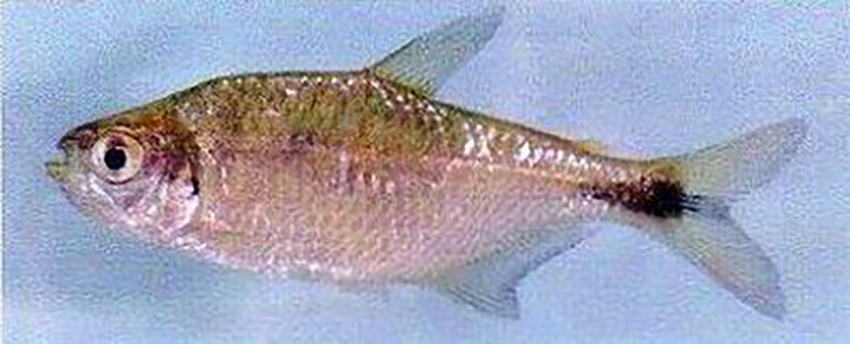new species:
Astyanax pynandi Casciotta, Almirón, Bechara, Roux & Ruiz Diaz, 2003
type locality:
Argentina, Province of Corrientes, Esteros del Iberá, Laguna Iberá, Lobo-Cuá (28°32’S 57°12’W); Holotype MACN-Ict 8543 (52.0 mm SL)
published in:
Casciotta, J.R., A.E. Almirón, J.A. Bechara, J.P. Roux & F. Ruiz Diaz (2003):
Astyanax pynandi sp.n. (Characiformes‚ Characidae) from the Esteros del Iberá wetland, Argentina.
Revue Suisse de Zoologie 110 (4): 807-816
abstract (from publication):
Astyanax pynandi is described from the Esteros del Iberá, one of the major wetlands in South America. Astyanax pynandi bears hooks on all fin rays of males, such as in A. troya and A. ojiara. Astyanax pynandi is distinguished from the remaining species of the genus by the following characters: one maxillary tooth with 5 or 7 cusps; teeth of inner premaxillary row expanded distally; low dentary, bearing 8 teeth decreasing in size anteroposteriorly; 34-37 perforated scales in lateral series; 6-7 upper transverse scales; iii-v, 21-26 anal-fin rays: orbital diameter (36.7-43.5% of HL); postorbital lenth (37.0-44.7% of HL); and peduncle length (32.3-37.7% of HL). One humeral spot vertically elongated, bounded by a light area, and a second lateral spot faint or well developed.
distribution (from publication):
Astyanax pynandi is known from the Laguna Iberá, Laguna Paraná, Canal Carambolas, and Canal Pirayú between Laguna Sucia or Yacaré and río Corriente.

